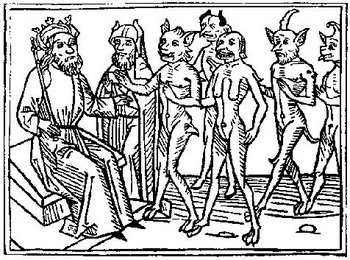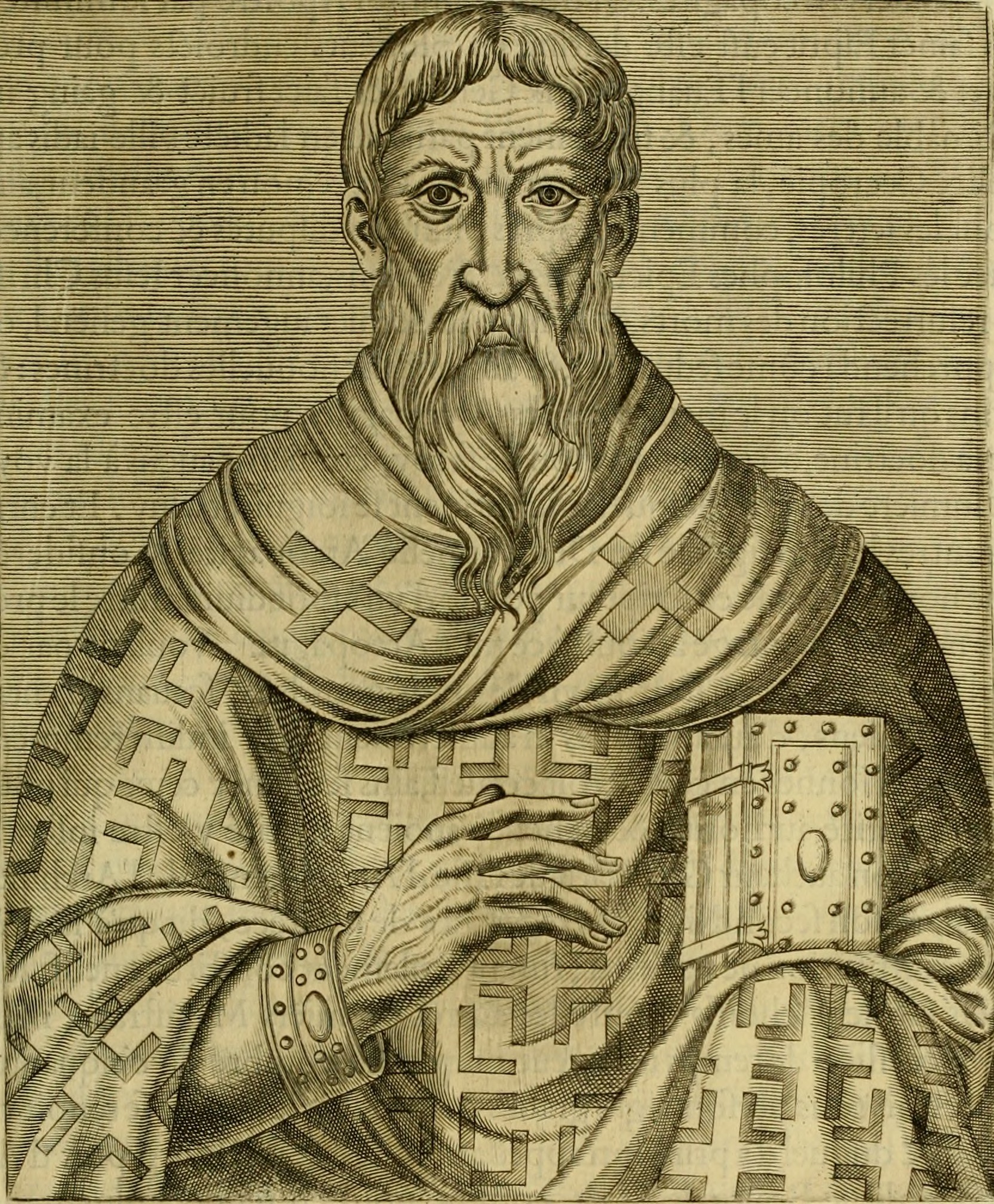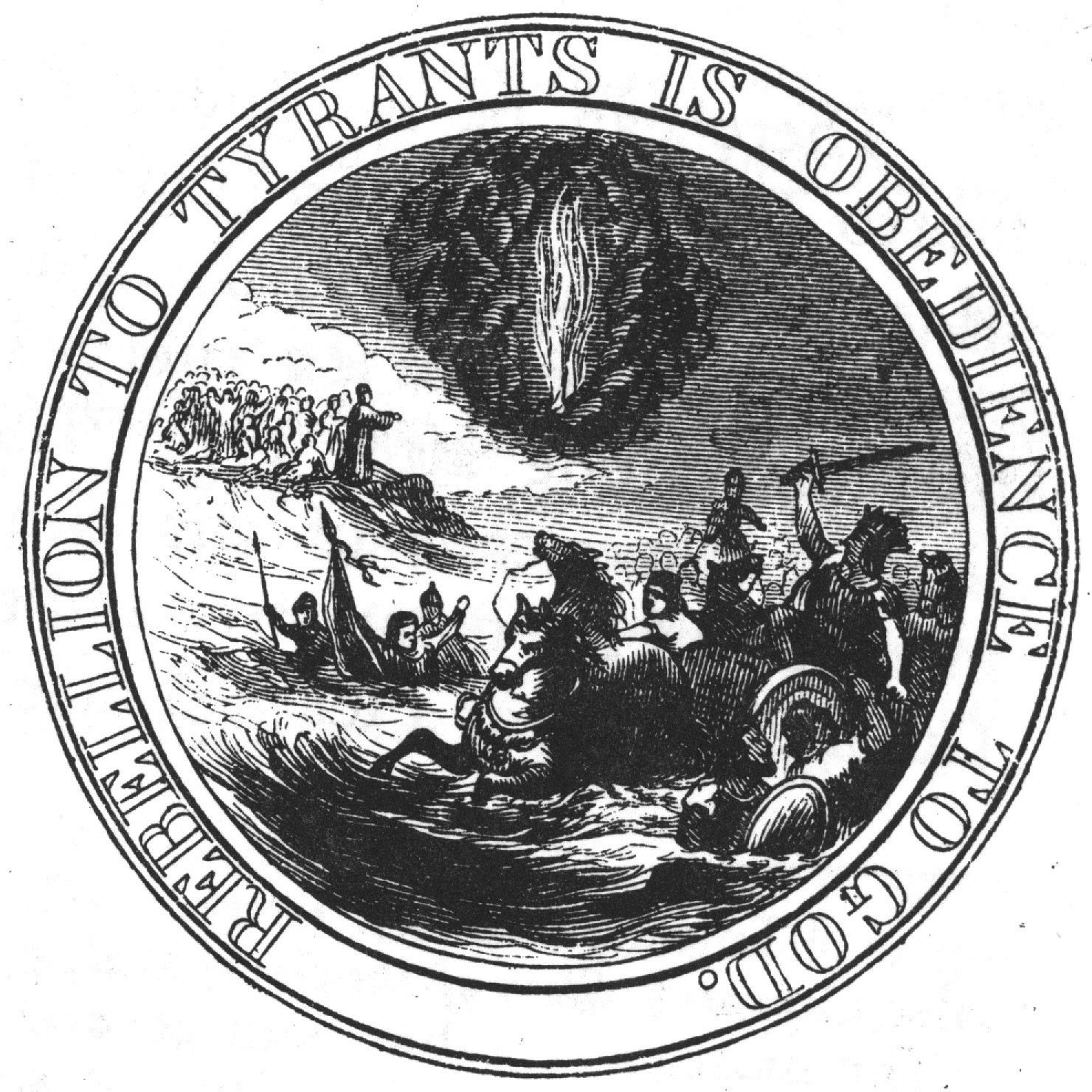|
Adam Belial
Belial (; , ''Bəlīyyaʿal'') is a term occurring in the Hebrew Bible/Old Testament which later became personified as the devilSee the reference to "Beliar" in ''The Ascension of Isaiah'', at EarlyChristianWritings.com', specifically at 1:8–9, 2:4, 3:11–13, 4:2, 4:14–18, 5:1, 5:15. in Christian texts of the New Testament. Alternate spellings include Baalial, Balial, Belhor, Beliall, Beliar, Berial, Bylyl and Beliya'al. Early usage of ''Belial'' referred to "wickedness" or "worthlessness", occurring several times in the Old Testament. Later, in the Dead Sea Scrolls (c. 300 BCE), Belial was personified as a demon. In the Secret Book of John, an early Gnostic text, the ruler of the underworld is referred to as Belias. Hebrew Bible/Old Testament ''Belial'' is a Hebrew word "used to characterize the wicked or worthless". The etymology of the word is often understood as "lacking worth", from two common words: ''beli-'' (בְּלִי "without-") and ''ya'al'' (יָעַל "t ... [...More Info...] [...Related Items...] OR: [Wikipedia] [Google] [Baidu] |
Idolatry
Idolatry is the worship of an idol as though it were a deity. In Abrahamic religions (namely Judaism, Samaritanism, Christianity, Islam, and the Baháʼí Faith) idolatry connotes the worship of something or someone other than the Abrahamic God as if it were God. In these monotheistic religions, idolatry has been considered as the "worship of false gods" and is forbidden by texts such as the Ten Commandments. Other monotheistic religions may apply similar rules. For instance, the phrase '' false god'' is a derogatory term used in Abrahamic religions to indicate cult images or deities of non-Abrahamic Pagan religions, as well as other competing entities or objects to which particular importance is attributed. Conversely, followers of animistic and polytheistic religions may regard the gods of various monotheistic religions as "false gods" because they do not believe that any real deity possesses the properties ascribed by monotheists to their sole deity. Atheists, who do n ... [...More Info...] [...Related Items...] OR: [Wikipedia] [Google] [Baidu] |
Dead Sea Scrolls
The Dead Sea Scrolls, also called the Qumran Caves Scrolls, are a set of List of Hebrew Bible manuscripts, ancient Jewish manuscripts from the Second Temple period (516 BCE – 70 CE). They were discovered over a period of ten years, between 1946 and 1956, at the Qumran Caves near Ein Feshkha in the West Bank, on the northern shore of the Dead Sea. Dating from the 3rd century BCE to the 1st century CE, the Dead Sea Scrolls include the oldest surviving manuscripts of entire books later included in the biblical canons, including Deuterocanonical books, deuterocanonical manuscripts from late Second Temple Judaism and extrabiblical books. At the same time, they cast new light on the emergence of Christianity and of Rabbinic Judaism. Almost all of the 15,000 scrolls and scroll fragments are held in the Shrine of the Book at the Israel Museum located in Jerusalem. The Israeli government's custody of the Dead Sea Scrolls is disputed by Jordan and the Palestinian National Authority, P ... [...More Info...] [...Related Items...] OR: [Wikipedia] [Google] [Baidu] |
War Of The Sons Of Light Against The Sons Of Darkness
''The War of the Sons of Light Against the Sons of Darkness'', also known as War Rule, Rule of War and the War Scroll, is a manual for military organization and strategy that was discovered among the Dead Sea Scrolls. The manuscript was among the scrolls found in Qumran Cave 1, acquired by the Hebrew University of Jerusalem and first published posthumously by Eleazar Sukenik in 1955. The document is made up of various scrolls and fragments including 1QM, and 4Q491–497. It is possible that '' The War of the Messiah'' is the conclusion to this document. The 4Q491–497 fragments were published by Maurice Baillet in '' Discoveries in the Judaean Desert'', volume 7 and comprise a shorter recension of the War Scroll. History Two time periods have been put forward and defended as the most probable time of composition: the Seleucid period and the Roman period. The Seleucid period proposals include the very beginning of the Maccabean Revolt (165 or 164 ), the height of Jonathan's ... [...More Info...] [...Related Items...] OR: [Wikipedia] [Google] [Baidu] |
Qumran
Qumran (; ; ') is an archaeological site in the West Bank managed by Israel's Qumran National Park. It is located on a dry marl plateau about from the northwestern shore of the Dead Sea, about south of the historic city of Jericho, and adjacent to the modern Israeli settlement and kibbutz of Kalya. The Hellenistic civilization, Hellenistic period settlement was constructed during the reign of Hasmonean dynasty, Hasmonean leader John Hyrcanus () or somewhat later. Qumran was inhabited by a Jewish religious movements#Sects in the Second Temple period, Jewish sect of the late Second Temple period, which most scholars identify with the Essenes; however, other Jewish groups were also suggested. It was occupied most of the time until and was destroyed by the Roman Empire, Romans during the First Jewish–Roman War, possibly as late as 73 CE. It was later used by Jewish rebels during the Bar Kokhba revolt. Today, the Qumran site is best known as the settlement nearest to the Qumran ... [...More Info...] [...Related Items...] OR: [Wikipedia] [Google] [Baidu] |
Apocrypha
Apocrypha () are biblical or related writings not forming part of the accepted canon of scripture, some of which might be of doubtful authorship or authenticity. In Christianity, the word ''apocryphal'' (ἀπόκρυφος) was first applied to writings that were to be read privately rather than in the public context of church services. Apocrypha were edifying Christian works that were not always initially included as Biblical canon, canonical scripture. The adjective "apocryphal", meaning of doubtful authenticity, mythical, fictional, is recorded from the late 16th century, then taking on the popular meaning of "false," "spurious," "bad," or "heretical." It may be used for any book which might have scriptural claims but which does not appear in the canon accepted by the author. A related term for non-canonical apocryphal texts whose authorship seems incorrect is pseudepigrapha, a term that means "false attribution". In Christianity, the name "biblical apocrypha, the Apocrypha" ... [...More Info...] [...Related Items...] OR: [Wikipedia] [Google] [Baidu] |
Pseudepigrapha
A pseudepigraph (also :wikt:anglicized, anglicized as "pseudepigraphon") is a false attribution, falsely attributed work, a text whose claimed author is not the true author, or a work whose real author attributed it to a figure of the past. The name of the author to whom the work is falsely attributed is often prefixed with the particle ":wikt:pseudo-, pseudo-", such as for example "pseudo-Aristotle" or "pseudo-Dionysius": these terms refer to the anonymous authors of works falsely attributed to Aristotle and Dionysius the Areopagite, respectively. In biblical studies, the term ''pseudepigrapha'' can refer to an assorted collection of Jewish religious works thought to be written 300 BCE to 300 CE. They are distinguished by Protestantism, Protestants from the deuterocanonical books (Catholic and Orthodox) or Apocrypha (Protestant), the books that appear in extant copies of the Septuagint in the fourth century or later and the Vulgate, but not in the Hebrew Bible or in Protestan ... [...More Info...] [...Related Items...] OR: [Wikipedia] [Google] [Baidu] |
Second Temple
The Second Temple () was the Temple in Jerusalem that replaced Solomon's Temple, which was destroyed during the Siege of Jerusalem (587 BC), Babylonian siege of Jerusalem in 587 BCE. It was constructed around 516 BCE and later enhanced by Herod the Great around 18 BCE, consequently also being known as Herod's Temple thereafter. Defining the Second Temple period and standing as a pivotal symbol of Jewish identity, it was the basis and namesake of Second Temple Judaism. The Second Temple served as the chief place of worship, ritual sacrifice (''korban''), and communal gathering for the Jewish people, among whom it regularly attracted pilgrims for the Three Pilgrimage Festivals: Passover, Shavuot, and Sukkot. In 539 BCE, the Fall of Babylon, Persian conquest of Babylon enabled the Achaemenid Empire to expand across the Fertile Crescent by annexing the Neo-Babylonian Empire, including the territory of the former Kingdom of Judah, which had been annexed as the Yehud (Babylonian provi ... [...More Info...] [...Related Items...] OR: [Wikipedia] [Google] [Baidu] |
God In Judaism
In Judaism, God has been conceived in a variety of ways. Traditionally, Judaism holds that Yahweh—that is, the God in Abrahamic religions#Judaism, god of Abraham, Isaac and Jacob, and the national god of the Israelites—delivered them from The Exodus, slavery in Egypt, and gave them the Law of Moses at Mount Sinai (Bible), Mount Sinai as described in the Torah. Jews traditionally believe in a Monotheism, monotheistic conception of God ("Shema Yisrael, God is one"), characterized by both Transcendence (religion), transcendence (independence from, and separation from, the material universe) and immanence (active involvement in the material universe). God is seen as unique and perfect, free from all faults, and is believed to be omnipotent, omnipresent, omniscient, and Absolute infinite, infinite in all attributes, with no partner or equal, serving as the sole Creator deity, creator of everything in existence. In Judaism, Aniconism in Judaism, God is never portrayed in any ima ... [...More Info...] [...Related Items...] OR: [Wikipedia] [Google] [Baidu] |
Book Of Judges
The Book of Judges is the seventh book of the Hebrew Bible and the Christian Old Testament. In the narrative of the Hebrew Bible, it covers the time between the conquest described in the Book of Joshua and the establishment of a kingdom in the Books of Samuel, during which Hebrew Bible judges, Biblical judges served as temporary leaders. The stories follow a consistent pattern: the people are unfaithful to Yahweh; he therefore delivers them into the hands of their enemies; the people repent and entreat Yahweh for mercy, which he sends in the form of a leader or champion; the judge delivers the Israelites from oppression and they prosper, but soon they fall again into unfaithfulness and the cycle is repeated. The pattern also expresses a repeating cycle of wars. But in the last verse (21:25) there is a hint that the cycle can be broken—with the establishment of a monarchy. While most contemporary critical scholars reject the historical accuracy of the Book of Judges, some arg ... [...More Info...] [...Related Items...] OR: [Wikipedia] [Google] [Baidu] |
Geneva Bible
The Geneva Bible, sometimes known by the sobriquet Breeches Bible, is one of the most historically significant translations of the Bible into English, preceding the Douay Rheims Bible by 22 years, and the King James Version by 51 years. It was the primary Bible of 16th-century English Protestantism and was used by William Shakespeare, Oliver Cromwell, John Knox, John Donne and others. It was one of the Bibles taken to America on the ''Mayflower'' (Pilgrim Hall Museum has collected several Bibles of ''Mayflower'' passengers), and its frontispiece inspired Benjamin Franklin's design for the first Great Seal of the United States. The Geneva Bible was used by many English Dissenters, and it was still respected by Oliver Cromwell's soldiers at the time of the English Civil War, in the booklet '' The Souldiers Pocket Bible''. Because the language of the Geneva Bible was more forceful and vigorous, most readers strongly preferred this version to the Great Bible. In the words of Cl ... [...More Info...] [...Related Items...] OR: [Wikipedia] [Google] [Baidu] |
Shimei Ben Gera
Shimei ben Gera is a Biblical figure from the Book of II Samuel and the Book of I Kings. He was from the tribe of Benjamin and was related to King Saul. II Samuel relates that when King David was fleeing from his son Absalom, Shimei cursed him as he passed through the village of Bahurim: 5. And when king David came to Bahurim, behold, there came out thence a man of the family of the house of Saul, whose name was Shimei, the son of Gera; he came out, and kept on cursing as he came. 6. And he cast stones at David, and at all the servants of king David; and all the people and all the mighty men were on his right hand and on his left. 7. And thus said Shimei when he cursed: 'Begone, begone, thou man of blood, and base fellow; 8. the Lord hath returned upon thee all the blood of the house of Saul, in whose stead thou hast reigned; and the Lord hath delivered the kingdom into the hand of Absalom thy son; and, behold, thou art taken in thine own mischief, because thou art a man of bl ... [...More Info...] [...Related Items...] OR: [Wikipedia] [Google] [Baidu] |











